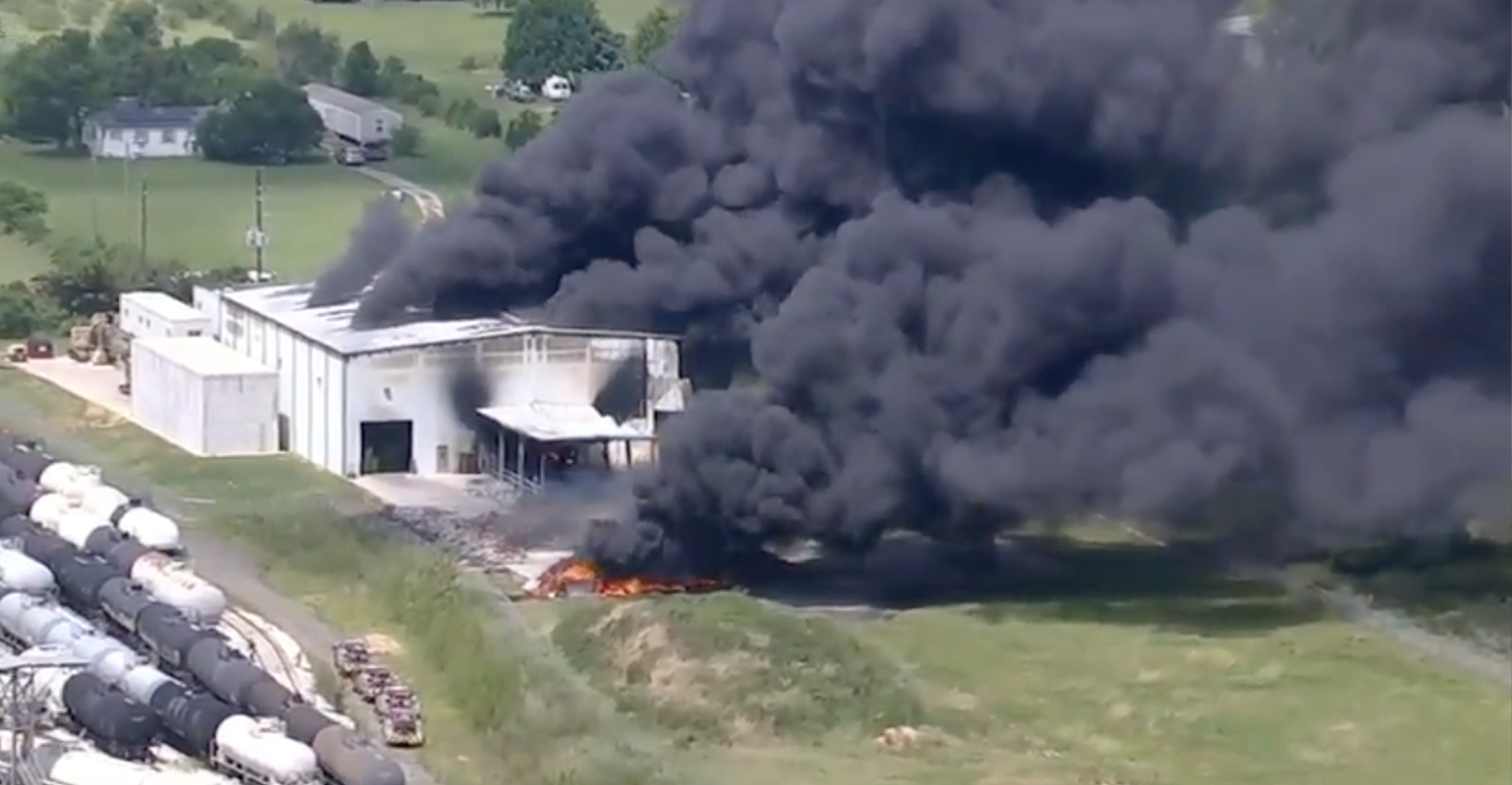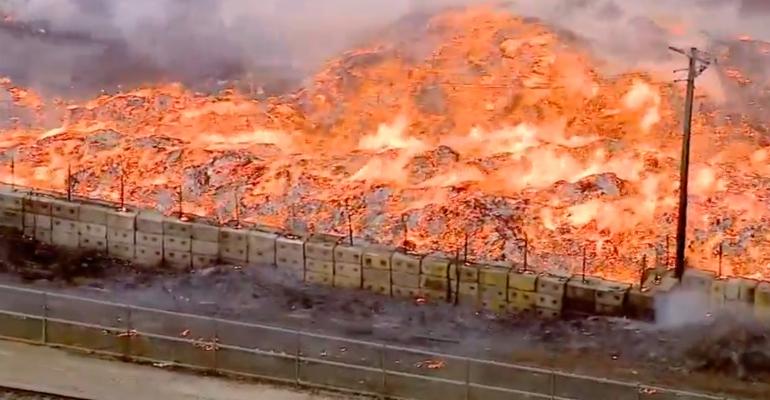
January, February and March are in the rear-view mirror, and although the first two months of the year were par for the course, in March, we incurred 31 reported fire incidents, the second-highest March for fire incidents since the 2018 lithium-ion battery spike and back to a normal level from the pandemic March of last year. Of the 69 reported fires in the first quarter, 32 of the incidents occurred at waste, paper and plastic operations; 22 occurred at metal operations; six occurred at organic facilities; five occurred at construction and demolition operations; three occurred at chemical facilities; and one occurred at a rubber operation. At Fire Rover, we eliminated 34 fires in the first quarter, over half of which occurred in March.
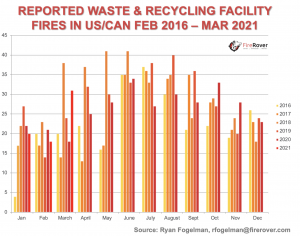
As we head toward the summertime spike in fires along with the expected economic growth of a post-pandemic year, we need to stay diligent in our fire prevention programs. Over the past year, our operators have been forced to focus on personal protective equipment and training to help keep employees from contracting COVID-19, but as our vaccines take hold and we move toward the new normal, we need to get back to our focus on fire prevention, training and investments in fire elimination solutions.
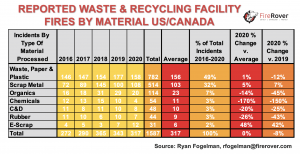
Fires in scrap metal facilities are on the rise. In 2020, scrap metal fires started to increase from their large drop in 2019 or, depending on your interpretation, their huge spike in 2018. In fact, in September 2020, we saw the second-highest number of fires at scrap metal facilities than we have experienced in the past five years I have been tracking the reported fire data.
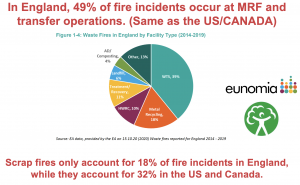
Additionally, Eunomia completed a study where reported metal fires in the UK made up 18 percent of fire incidents, whereas in the U.S., the number is 32 percent. Fires at scrap metal operations occur in automotive shredder residue piles, shredders and tin piles. Here is an example of our Fire Rover dealing with a fire incident at a light tin pile. Scrap metal facility operators understand this problem and are working to mitigate their specific risks. One operator, Brett Ekart of United Metals Recycling, is going the extra mile to keep his operations and employees safe from the ongoing threat of fires.
To learn more about his efforts, I sat down with Ekart to discuss how he got his start in the industry, how he’s incorporating technology and automation into his operations and how he’s sharing his best practices and lessons learned with others in the scrap metal industry in an effort to reduce fire incidents on a larger scale.
A Conversation with Brett Ekart, aka Dr. Hustle
“I have a family I love, and I have a job I love. My LinkedIn is real. This is me. I say what is on my mind.” – Brett Ekart
I have been on LinkedIn since the early 2000s, and if you’re a member of LinkedIn, you know it is NOT social media. It is a digital network tool that has many advantages for meeting people, building professional relationships and doing business. The biggest value I see is that I am not tied to being force-fed news from large media outlets and newspapers. By choosing the people, businesses, organizations and groups I follow, I am provided with a daily feed that allows me to choose what articles I want to read, videos I want to watch and people I want to learn from.
A few years ago, I started seeing Brett Ekart’s profile start popping up on my feed. Ekart is a third-generation scrap metal operator whose grandfather started a single yard with a partner in 1972. A few years later, Ekart’s dad bought out his grandfather and opened a second yard, where Ekart and his friends worked and gained industry experience.
Once Ekart graduated high school, he stepped away from the family business, United Metals Recycling, for a short period to get his bachelor’s degree in business from Eastern Oregon University and to play D3 football. In 1998, he made his return to the family business and surrounded himself with “people who have smarts, drive and hustle, not necessarily with a formal education but drive based on the real-world execution.”
“In 1998, I had the right team that was ready to help me take the business to the next level, so I ended up buying out my dad and eventually adding additional lines of business to the two scrap yards,” says Ekart.
Fast forward to today, Ekart now has eight operations across Idaho and Oregon, including a few large ancillary businesses that offer services such as pipe relining, pipe manufacturing, trucking and hauling.
“When you play on the right team, you know whether you are a winner or a loser before you play the game,” states Ekart.
When Ekart and I first connected on LinkedIn, I asked him about the issue of fire in his operation, and he shared his story with me. Ekart had bought a mobile baler with less than 100 hours on it for $500,000 at an auto salvage, but when one of his workers baled a car, the battery in the car was either overlooked or not taken out properly because it created a spark that caused the car to catch fire.
“The employee opened the bale chamber versus keeping it closed, so the tires caught on fire, and it was game over,” explains Ekart. “The biggest issue with that fire wasn’t the insurance or cleanup cost, it was the ‘opportunity cost’ of work that I missed out on due to six months of downtime and my customers going to my competitor.”
Since that incident, Ekart and his team have ramped up their fire prevention and safety efforts, such as cleaning radiators and investing in more automation and technology.
“Over the years, I’ve found that I don’t need the latest and greatest, but I do need equipment that will allow me to have the best quality,” says Ekart. “Innovation can be something that is old from a technology standpoint as long as it fits the need you are looking to fill.”
To say that Ekart lives a simple life would be an understatement. In addition to being a CEO, he’s a flag football coach for both of his sons’ teams; a host of his podcast titled “A Scrap Life,” which covers the scrap metal recycling industry and how the industry has played a role in peoples’ lives; a husband to his wife; and a go-to expert for scrap metal knowledge.
“My key to life is to live as close to my zero point as possible, and unlike most folks, my zero point is almost zero,” he says. “I work with my best friends, and we work hard to keep our 200 employees and their families fed. Some days we eat filet, but if we have to go back to eating PB&J to keep the lights on, it wouldn’t phase me a bit.”
“People on LinkedIn ask me all the time for advice on the state of the metals market,” he adds. “I get asked whether copper prices are going to go up or down. If I knew that answer, I would be trading copper futures and not cutting copper wire. My outlook on the long-term health of the industry is looking strong. I am optimistic but realistic about the base metal industries right now, and I do think there is room for a strong pricing standpoint for the metal industry.”
Ekart’s outlook is based on the fact that China was consuming 40 percent of the world’s copper and now India, Malaysia and others are starting to build infrastructure that’s driving demand for copper. He says he only invests in what he knows, and he’s “all in” on this long-term forecast.
“Yesterday I won, today I won and tomorrow I will win … I am one of the lucky ones,” he states. “I love what I do and who I get to do with it. I have always known what I was going to do, but that doesn’t stop me from trying new things. True entrepreneurship to me is looking for business adventures and opportunities where you can enjoy the journey more than the trophies. One of my biggest criteria when attempting new business ventures is enjoying the individual(s) I am doing it with. Because if I can’t enjoy the new ride, I will continue on with the current one that I know I already enjoy!”
Conclusion
So, why did I give Ekart the nickname “Dr. Hustle?” It all comes down to the fact that he hustles for what he wants in life. For example, after being the first in his family to earn a bachelor’s degree, he decided to take his education to the next level by earning his master’s. He has yet to go back to get a doctorate, but if you are lucky enough to spend a couple of minutes with him, you will see he not only deserves a doctorate in the scrap business but in life.
As for scrap metal facility fires specifically, I will continue to do the analysis, but the 32 percent has held steady since 2016 including the first quarter of this year. Why are these fires higher in North America versus the UK? This is something I will continue to spend time researching. Please do not hesitate to reach out if you have some insight.
If you have yet to read the “4th Annual Reported Waste & Recycling Facility Fires Annual Report,” it is available online and via PDF (email me at [email protected] for a copy). The National Waste & Recycling Association will be hosting a webinar titled “Tame the Li-ion: An In-Depth Report on Waste & Recycling Facility Fires in the US/CAN” on Wednesday, April 14 at 11 a.m. ET, where I plan to walk through the full findings of my annual report, discuss the risks and the costs we incur as an industry, provide preparation tools to help mitigate the risks and answer any questions. You can register for the webinar here.
Recent Posts
- August 2021 Fire Report: EPA’s Report Proves It’s Time for Government Intervention
- Fires Continue On Historical Trend; Dive Into Landfill Fires
- Is Sanitization Nation Responsible for the Post-Pandemic Surge in Facility Fires?
- May 2021 Fire Report: Is the Pandemic Recovery Driving Record-high Fire Incidents?
- April 2021 Fire Report: Worst Month for Fires Since 2016!
